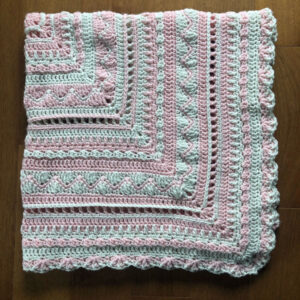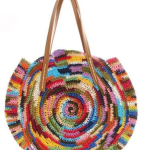Barn siding is an exterior cladding or covering used on barns, sheds, and agricultural buildings. The siding type shields the barn’s interior from rain, snow, and harsh winds. Most barn homes feature a vertical siding style, often board and batten or shiplap. Barn-style siding comprises various materials, including wood, metal, and vinyl.

Pros and Cons of Barn Siding
Pros
- Durability: Wood barn siding has an average lifespan of 20-40 years. Good quality vinyl and metal siding last up to 50 years with proper care.
- Weather resistance: Barn siding installation helps maintain the structural integrity and longevity of the barn. It provides a barrier against sunlight, wind, and rain.
- Low maintenance: Metal and vinyl barn siding require occasional cleaning. Wood siding may need painting or staining every five years.
- Rustic appearance: The siding type adds a rustic look to modern barn-style houses. It’s customizable in various materials, styles, colors, and finishes to match the property design.
Cons
- Cost: High-quality wood and fiber cement are costly barn siding materials. Vinyl is more cost-effective but less durable, especially in extreme weather conditions.
- Potential for insect infestation: Barn wood siding is the most vulnerable to termites, carpenter ants, and beetles. Metal and fiber cement are suitable options for avoiding pest-related issues.
- Limited design options: Exterior barn wood siding is installed vertically or board-and-batten. Other designs, like shakes or shingles, may not provide the desired aesthetic.
How to Install Exterior Barn Siding
The board and batten style is a popular style for barn siding.
Tools and Materials Required
- Barn siding
- House wrap
- Galvanized nails
- Level
- Furring strips
- Chalk line
- Circular or miter saw
- Spacers
- Finishes
Step-by-Step Installation Process
- Prepare the surface: If necessary, remove old siding and repair any damage to the wall. Ensure the surface is clean and dry before attaching a water-resistant house wrap.
- Plan the layout: Use a chalk line to mark the top and bottom of the first row of the siding. Use a level to ensure the lines are straight.
- Cut the board and batten siding: Use a circular or miter saw to cut the siding to the correct length. Take into consideration any doors, windows, or other architectural features.
- Install the furring strips: Install furring strips along the wall, perpendicular to the wall studs. The strips should be 16-24 inches apart, depending on the size of the siding. Use a level to ensure the strips are straight.
- Install the siding: Install the vertical planks from one end of the wall. Position the first piece of siding along the bottom chalk line and nail it down. Nail down the siding to the furring strips, leaving a gap between the panels for the battens to overlap. Use spacers to maintain consistent gaps.
- Add the batten strips: Install batten strips over the seams of the board siding using galvanized nails. The batten strips should cover the gap between the boards.
- Paint, seal, or stain: Stain wood barn siding to enhance the wood color and prevent moisture absorption. You can also paint barn siding to enhance the curb appeal.
Cost of Barn Siding
Barn siding installation costs between $3 to $9 per square foot. The overall cost depends on the materials used and the project size. Additional materials such as fasteners, finishes, and house wrap contribute to the final cost.
Factors Affecting the Overall Cost
- Type of siding: The material used affects the cost of barn siding. Plywood and vinyl types are the cheapest options. Reclaimed barn wood siding is the most expensive, costing $9-$12 per square foot for materials only.
- Quality and thickness: While high-quality materials are durable, they’re more expensive. Thicker siding can be more challenging to cut and install, increasing labor costs.
- Labor costs: Labor charges vary with location, as installers in urban areas may have high rates.
- Project size: Large projects need more materials and time to complete, increasing installation costs.
- The complexity of installation: Some siding materials, like fiber cement, need more labor-intensive installation. Board and batten siding is more complex to install than simple barn lap siding. It involves the installation of both boards and battens and precise spacing between them.
- Surface preparation: Removing old siding and repairing damaged walls increases labor costs. Most professionals charge an extra $1-$4 per square foot for removing and disposing of old siding.
Comparison of Barn Siding With Other Siding Options
Barn siding offers several advantages over other siding options. Comparing different types of siding helps you choose the best one for your home.
Vinyl Siding
Vinyl siding is made from plastic, which is less expensive than barn siding. The plastic is durable and low maintenance since it’s not susceptible to rot and insect damage. But vinyl siding gives off an artificial, shiny look, which isn’t desirable for some homeowners. Barn siding is preferable for its rustic look and texture.
Shingle Siding
Traditional shingle siding made from cedar is weatherproof. Unlike wood barn siding, it resists rot, bugs, and moisture damage. Both types of siding have vinyl and fiber cement material options. Shingle siding is popular for cottages and cape cod houses.
Stone Siding
Stone siding consists of natural stone, faux stone, or stone veneer. Like barn siding, stone is durable and gives a rustic appearance. Stone siding increases a home’s resale value, giving back at least 91.4% of the investment.
Hardie Board Siding
Hardie board siding, or fiber cement siding, is made from a blend of cement, sand, and cellulose fibers. It’s available in various colors, including options that mimic the appearance of wood, stone, or stucco. Hardie board siding features a smooth and consistent finish, resulting in a modern and sleek appearance.
Common Barn Siding Materials
Wood
Wood barn siding consists of oak, pine, cedar, or plywood. It’s available in various grades, from rough-sawn to smooth textures. The wood is treated or stained to enhance its durability and resistance to weathering, insects, and rot. It’s a sustainable and environmentally-friendly siding option, as wood is a renewable resource.
Metal
Metal barn siding consists of steel, aluminum, or steel. Metal siding is popular for pole barns or agricultural buildings. It’s rigid, durable, and withstands harsh winds, heavy rain, and snow. Metal barn siding is also low-maintenance. You can easily clean it with a pressure washer or hose. But, this type of barn siding is more prone to dents or scratches.
Vinyl
Vinyl is a cheap barn siding material. It’s also lightweight and easy to install, improving a building’s insulation. But, it may not replicate the texture and appearance of natural wood as fiber cement and natural wood.
Fiber Cement
Fiber cement is the most durable exterior barn siding material. It can be painted or stained to achieve the desired look. The downside of fiber cement siding is that it’s heavy and needs specialized contractors to install.
Uses and Applications of Barn Siding
Barn siding has various interior and exterior applications.
Barns and Agricultural Buildings
Barn siding creates a classic look on sheds, barns, and agricultural buildings. Siding protects the building from weathering and wear and tear while enhancing its curb appeal.
Garages
Homeowners use barn siding for garages to match the home’s siding or create a unique look. The siding’s color, texture, and profile are customizable to meet their needs and budget. Barn siding is a practical and attractive choice for a garage, adding to the property’s value and aesthetic appeal.
Residential Homes
Residential applications for barn siding include wall paneling, accent walls, and fence construction. Barn siding is also used on headboards, kitchen cabinets, countertops, and islands.



